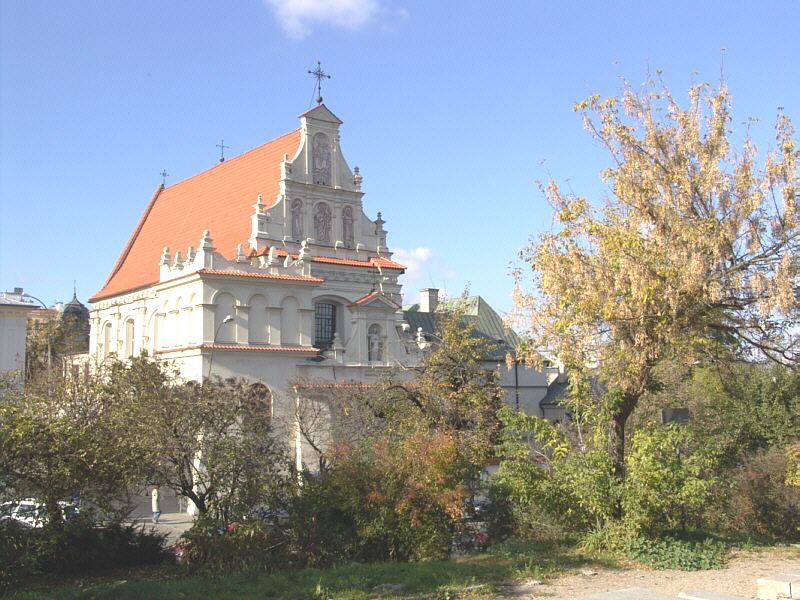Before it was turned into a convent, the building in Świętoduska Street was a Renaissance fortified manor owned by the voivod Rafał Leszczyński, who intended to give it to the Lublin calvinist community. It was built in the years 1619-1622 by Jakub Balin and, after the calvinists left the city, it was bought by the Carmelite Sisters. The adaptation of the building lasted from 1630 to 1635. When the convent was completed, the construction of the temple began (1636-1640).
Built according to a design by Jakub Tremanzel, it was erected as a small, single-nave, oriented, three-story church with a façade which is crowned with an ornamental gable. The barrel vault with lunettes is covered with stucco decorations typical of the Lublin Renaissance style. Neo-Renaissance attics over the bell tower and porch, designed by Stefan Szyller, were made at the beginning of the XX century. Sgraffito decorations depicting saints, placed in arcaded niches of the upper floor of the church, come from the same period. Their author is Władysław Barwicki, a painter from Lublin.
The XVIII century paintings in the main altar depict St. Joseph, the patron saint of the church, and St. Prince Casimir Jagiellon. Next to the music choir, there are two paintings from the XVII century, depicting scenes of the Transverberation of St. Teresa of Avila and Flagellation of Christ.
In 1807 the Carmelite Sisters were relocated to the convent in Staszica Street and the building was given to the Discalced Carmelite friars, whose monastery in Krakowskie Przedmieście burnt down in a fire.
After the dissolution of the order in 1864, the building of the convent served as military quarters, and at the end of the XIX century – as a prison. The Carmelite Order reclaimed some of the buildings in 1917 and the rest - in the middle of XX century.




